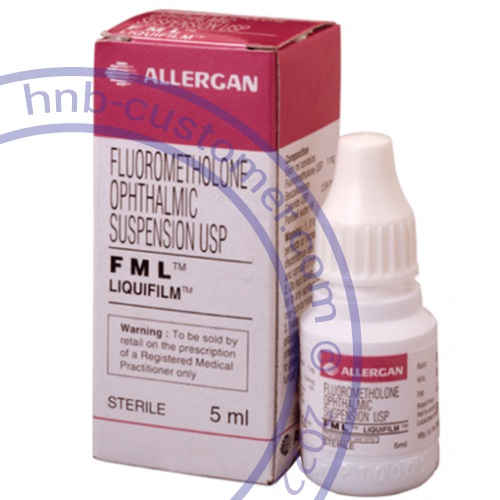Flarex
Fluorometholone
Fluorometholone eye drops
What is this product?
Fluorometholone is a glucocorticosteroid for topical application in the form of eye drops. Therapeutic efficacy is manifested in its anti-inflammatory, anti allergic and anti-exudative action, due to its vasoconstrictor effect. The remedy is designed for the treatment of inflammatory diseases of the conjunctiva, the cornea, the anterior part of the eye.
How to use this product?
Apply by instillation into the conjunctival sac 2-4 times a day. The duration of treatment is set individually.
What are the possible side effects?
Possible glaucoma, damage to the eye nerve, decreased visual acuity, visual impairment, cataract formation, development of secondary infection, perforation of eye tissues.
What are the contraindications for this product?
Viral diseases, tuberculosis, fungal infections, untreated bacterial infections, hypersensitivity to fluorometholone.
Pregnancy and lactemia
The safety of fluorometholone during pregnancy has not been studied. It is not known whether fluorometholone is excreted in human breast milk. If it is necessary to use during pregnancy and during lactation, the estimated benefit of therapy for the mother and the potential risk to the fetus or the child should be carefully weighed.
What are the special instructions?
With prolonged use, the risk of glaucoma, damage to the optic nerve, visual acuity, secondary eye infection increases.
When ulcerative lesions of the cornea against the background of the use of corticosteroids should be borne in mind the possibility of fungal infestation.
In diseases that cause thinning of the cornea or sclera, in the case of prolonged use of corticosteroids, perforation of these structures is possible.
The safety of fluorometholone during pregnancy has not been studied. It is not known whether fluorometholone is excreted in human breast milk. If it is necessary to use during pregnancy and during lactation, the estimated benefit of therapy for the mother and the potential risk to the fetus or the child should be carefully weighed.













